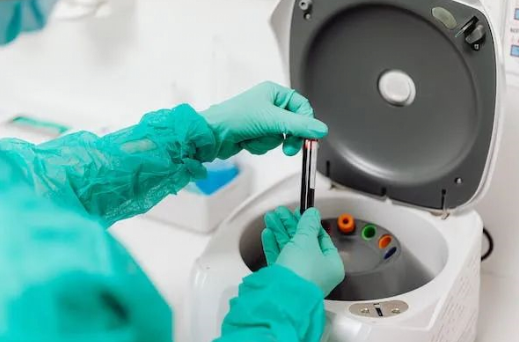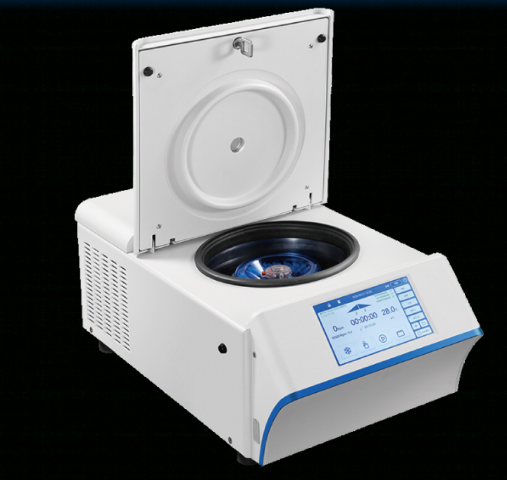Centrifuges are machines that separate the components of a mixture of liquid and solid particles or a mixture of two or more liquids by centrifugal force. The earliest use of centrifugal force can be traced back to ancient China when people tied a rope to a pot and spun it vigorously to separate the honey and honeycomb under gravity and centrifugal force.

The first industrial centrifuge was developed in Europe. After the industrial revolution in the 18th century, the textile industry gained rapid development. Then, industrial hydroextractors began to be valued. The appearance of the first industrial cotton hydroextractor created the embryonic form of a centrifuge.
In 1878, Gustaf de Laval of Sweden invented the first cream separator that separated cream from milk, and this was the first use of centrifuges in the food industry.
However, the application of centrifuges in industrial production did not begin until 1924. That year, Swedish chemists Svedberg and Rinde built the world's first ultra-high-speed oil turbine centrifuge with an optical system and a speed of 45000rpm. Later, Theodor Svedberg modified the centrifuge and raised its maximum speed to 75,000 r/min. Based on this ultra-speed centrifuge, hemoglobin was isolated from the blood for the first time, which opened a new chapter in biochemical research.
In 1950, EWiedeman of Switzerland produced a centrifuge driven directly by a frequency-conversion motor, which further simplified the structure of centrifuges. In the late 1970s, the American Beckman Company introduced a frequency-conversion motor direct drive ultra-speed centrifuge.
As science and technology advance, centrifuges play a critical role in various fields. There are different types of centrifuges on the market now, including high-speed centrifuges, low-speed centrifuges, dental centrifuges, PCR laboratory centrifuges, as key examples. For different scientific research fields, it is significant to choose a suitable centrifuge product.

Haier Biomedical’s Desktop High-speed Refrigerated Centrifuge is mainly used in laboratories for nucleic acid extraction, DNA/RNA separation, purification, virus isolation, and protein precipitation. It has extensive applications in universities, third-party testing institutions, and various related fields, including disease prevention, medical and health care, biopharmaceutical, to name but a few.
1. Intelligent control and high efficiency and safety
Haier Biomedical’s desktop high-speed refrigerated centrifuge features intelligent control and an interactive interface. The intelligent centrifugation management system can detect rotor failure and monitor the service life of the centrifuge. For data monitoring, the system supports multi-level user management and the view of malfunction alarms, and it can monitor the time intelligently to protect the security of personal data.
2. Automatic rotor identification and rotor service life counting
After a rotor is installed, the centrifuge will recognize the rotor model automatically to ensure that the equipment operates safely within the corresponding rotor limits.
Rotor ID: Each motor has a unique ID, and it can be used to track the rotor information.
Rotor service life counting: It records the service time of the rotor on the terminal and provides an early warning when the rotor reaches the end of its service life.
3. Balance detection
Balance detection includes whole-machine vibration detection, rotor balance detection, and centrifuge balance detection:The whole-machine vibration detection is accomplished via a six-axis gyroscope, and once the vibration exceeds the safety limit, it will stop the machine automatically. The rotor balance detection is to reveal the centrifugal process dynamically to actively identify the balance errors and stop the machine automatically, when necessary. The centrifuge balance detection is performed through a built-in electronic gradiometer to detect the machine status automatically.
4. Precise temperature control and super-fast refrigeration
The combination of dual frequency-conversion refrigeration technology and high-precision throttling technology can provide accurate temperature control while refrigerating rapidly. In addition, the seamless copper tube wrapping technology can achieve efficient heat transfer.
Committed to the development of global medical and health undertakings, Haier Biomedical will continue to make product innovations in the future to provide users with more medical and life science scenario solutions and lead the vigorous development of the biomedical industry.
original source: https://www.haiermedical.com/news/blog/The-Development-History-of-Centrifuges.html
Media Contact
Company Name: Haier Biomedical
Email: Send Email
Phone: +86-532-88935593
Country: China
Website: https://www.haiermedical.com/













